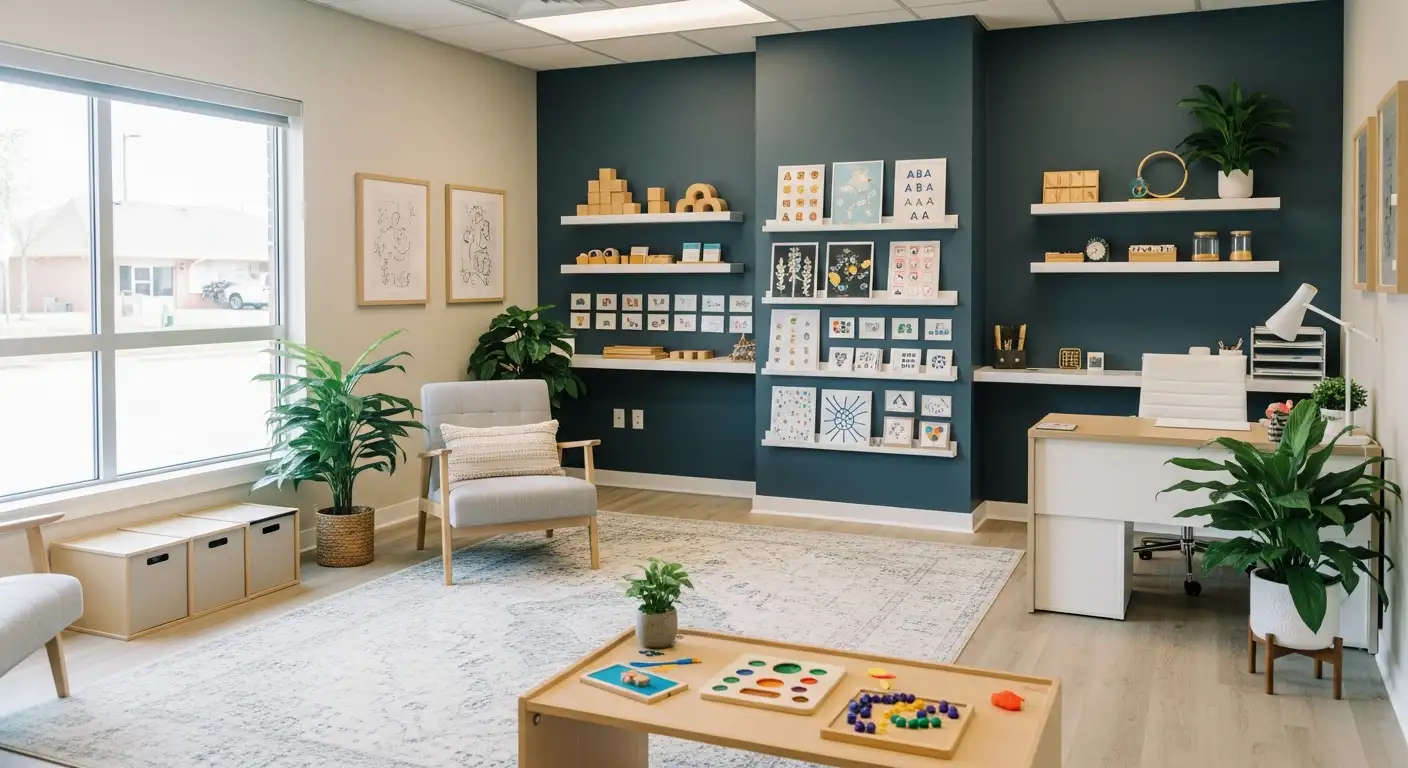Understanding the Foundation of Trust and Engagement
In the realms of therapy and education, establishing a meaningful connection between the clinician or educator and the learner is paramount. Recognized as 'pairing,' this process serves as the cornerstone for building rapport, fostering trust, and facilitating effective learning and behavioral change. When executed effectively, pairing transforms initial apprehension into cooperation, laying a solid groundwork for future interventions and skill development.
Core Components of Building Rapport
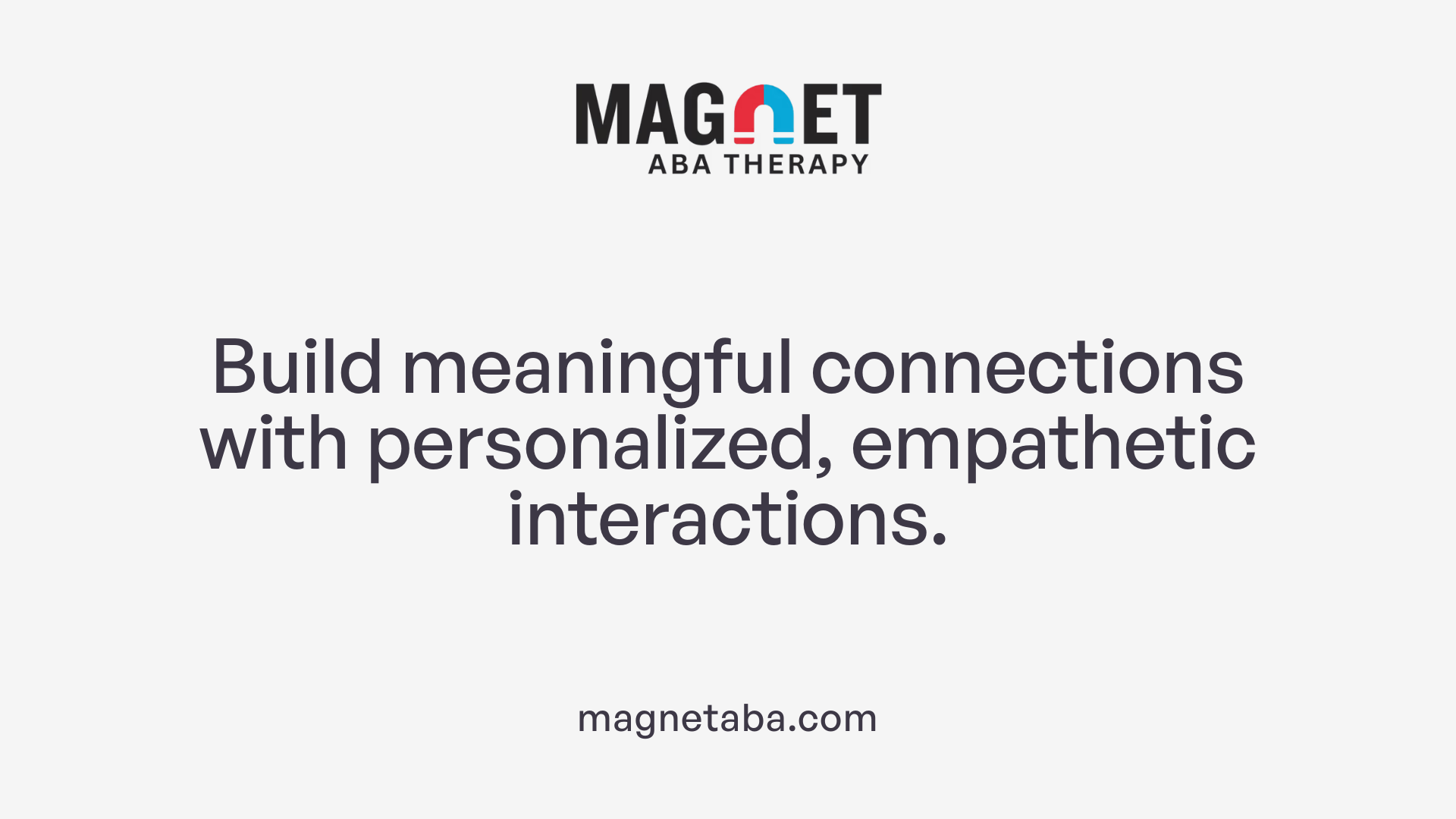
What are the key components of building rapport in therapeutic or educational settings?
Building rapport is a fundamental aspect of successful therapy and learning environments. It involves establishing a sense of trust and mutual understanding between the facilitator—whether a therapist, teacher, or caregiver—and the individual they are working with.
At the heart of rapport-building are several essential elements. First, trust creation is crucial; the individual needs to feel safe and confident that their needs and interests are respected. This is often achieved by engaging with activities or items the person prefers, thus associating the facilitator with positive experiences.
Mutual understanding also plays a vital role. This involves learning about the individual's interests, preferences, and motivations through observation and interaction. Tailoring activities and communication styles to the individual’s unique profile makes the interaction more meaningful.
Empathy is another cornerstone—being attentive to the individual’s emotional states and responding with kindness and understanding fosters a nurturing environment. Verbal communication, like open-ended questions and reflective listening, alongside non-verbal cues such as eye contact, body language, and facial expressions, help convey genuine interest and attentiveness.
Personalization of interactions further enhances rapport. Addressing individuals by name, engaging in preferred activities, and participating at their developmental or sensory level indicate respect and genuine care. These strategies foster a collaborative atmosphere that encourages participation and learning.
In practice, consistent application of these components—trust, understanding, empathy, clear communication, and personalization—builds a strong foundation. This foundation not only facilitates smoother interactions but also improves overall outcomes by making individuals more comfortable, motivated, and engaged in the process.
The Role of Pairing in Establishing Trust and Reducing Anxiety
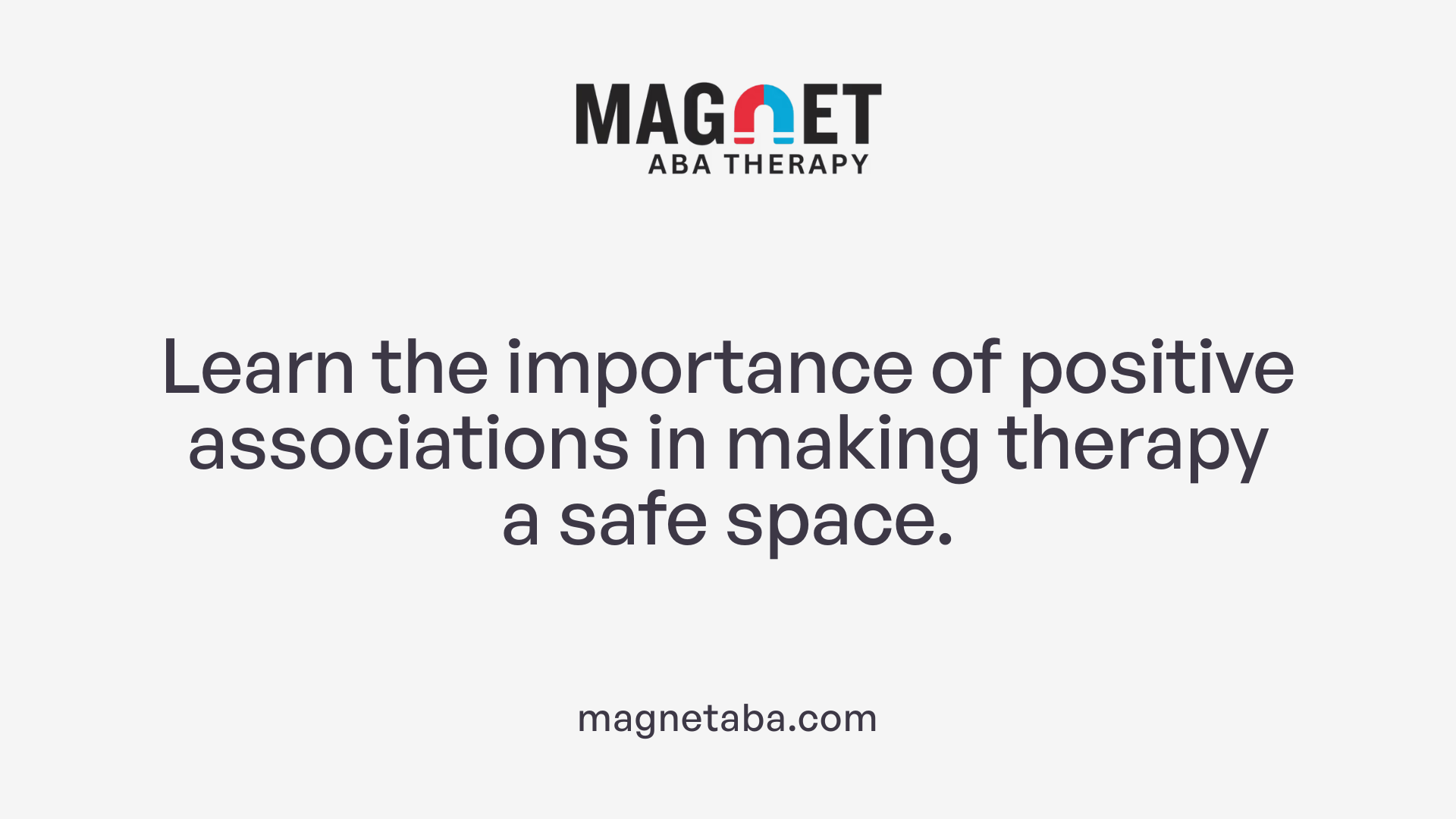
How does pairing help establish trust and reduce anxiety for clients or children?
Pairing plays a crucial role in building a trusting relationship between the therapist and the child, especially in early stages of therapy. It works by creating positive associations with the therapist through engaging in activities or using items that the child already enjoys, such as favorite toys, snacks, or specific games. When a therapist associates themselves with these preferred objects or activities, the child begins to link the therapist with positive experiences.
This process makes the therapy environment feel safe, welcoming, and non-threatening. As a result, children are more likely to feel comfortable, less anxious, and open to participating in therapy sessions. Consistent use of reinforcement during enjoyable interactions fosters a sense of security, encouraging children to approach the therapist and engage willingly.
Effective pairing involves activities that the child finds fun and rewarding, rather than demanding, which avoids triggering resistance or stress. For example, playing with cars if the child loves cars, or singing a favorite song, helps shape positive feelings towards the therapy process. Over time, these positive relationships reduce the child's resistance and emotional distress.
Creating a fun, safe environment through pairing also means that the child perceives therapy as an enjoyable experience rather than an intimidating or punitive one. This foundation of trust is essential for facilitating learning, encouraging cooperation, and establishing a productive therapeutic relationship.
In summary, pairing helps children view their therapist as a source of positive feelings and comfort. This emotional connection reduces anxiety, fosters trust, and sets the stage for effective behavior change, skill acquisition, and ongoing engagement in the therapeutic process.
Effective Techniques for Pairing in Practice
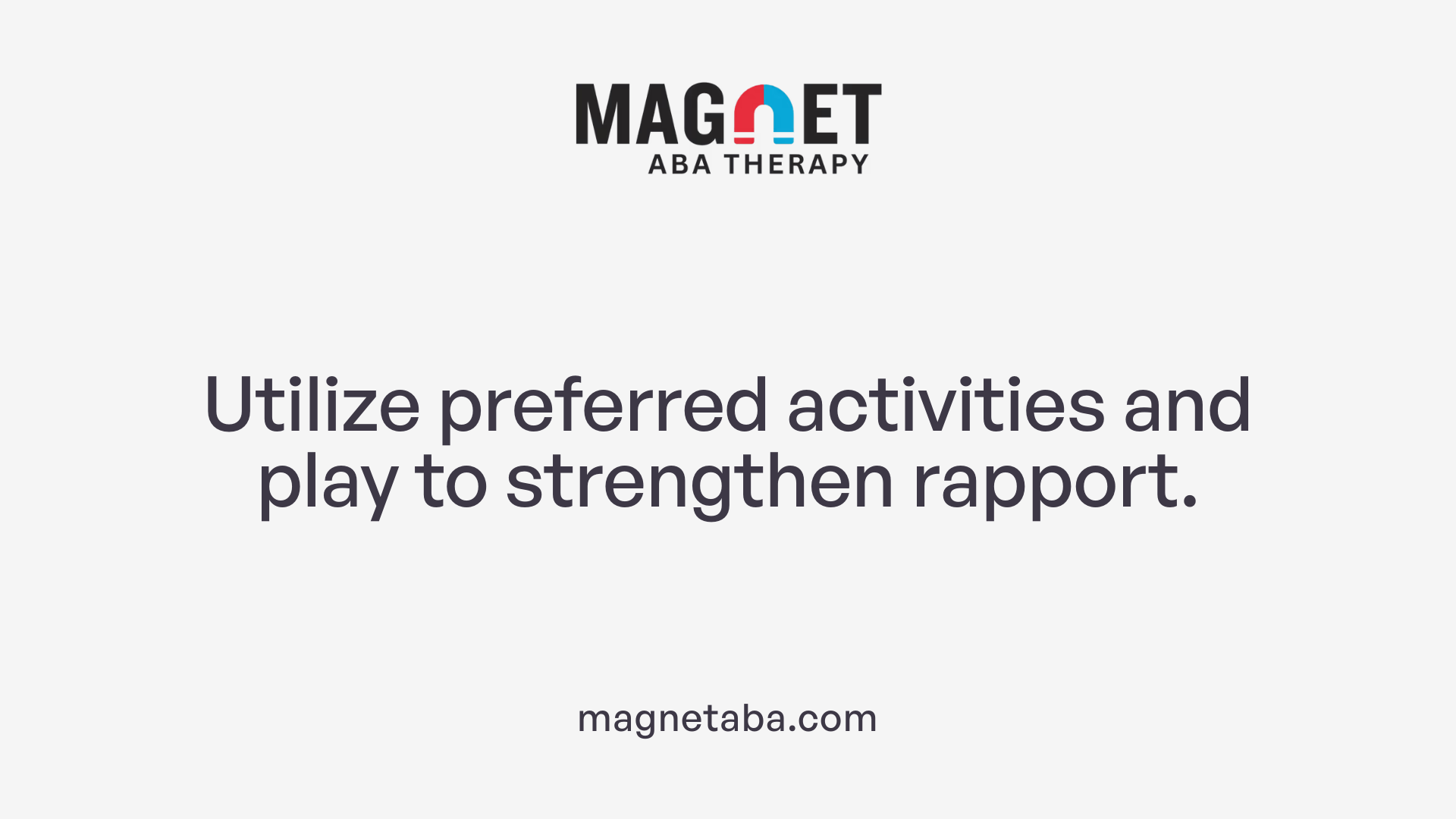
What techniques are used for effective pairing in educational and therapeutic settings?
Building strong rapport in therapy sessions involves several practical strategies designed to foster trust, motivation, and positive engagement between the therapist and the learner. One foundational technique is using preferred activities and items that the child enjoys. When a child has access to toys, treats, or sensory activities they love, they associate the therapist with these positive experiences. This promotes a sense of safety and eagerness to participate.
Play-based interactions are also vital. Engaging with the child through games, songs, or playful routines helps create a relaxed and enjoyable environment. During these sessions, therapists observe the child's responses, interests, and preferences, which guide the selection of reinforcers for future activities.
Presession pairing, a common method in ABA practice, involves engaging with the child before formally starting demands or tasks. During presession, the therapist and child share preferred activities, establishing a positive connection that carries over into structured parts of therapy.
Gradually introducing demands is important to avoid overwhelming the child. After initial play and positive interactions, therapists gently introduce simple tasks, ensuring that these are paired with reinforcement to maintain motivation. This step-by-step process helps solidify trust and minimizes resistance.
Monitoring signs of rapport is crucial. When the child actively attends to the therapist, seeks out their presence, follows simple requests, and displays reduced problematic behaviors, it indicates successful pairing. Consistent reinforcement, both during and outside sessions—like parents reinforcing positive interactions at home—further supports the establishment of a strong, trusting relationship.
To summarize, effective pairing combines preferred activities, engaging play, gentle introduction of expectations, and ongoing observation of the child's comfort level. These techniques create a positive, motivating environment that lays the groundwork for successful therapy and learning.
Implementing Pairing in ABA Therapy for Optimal Results
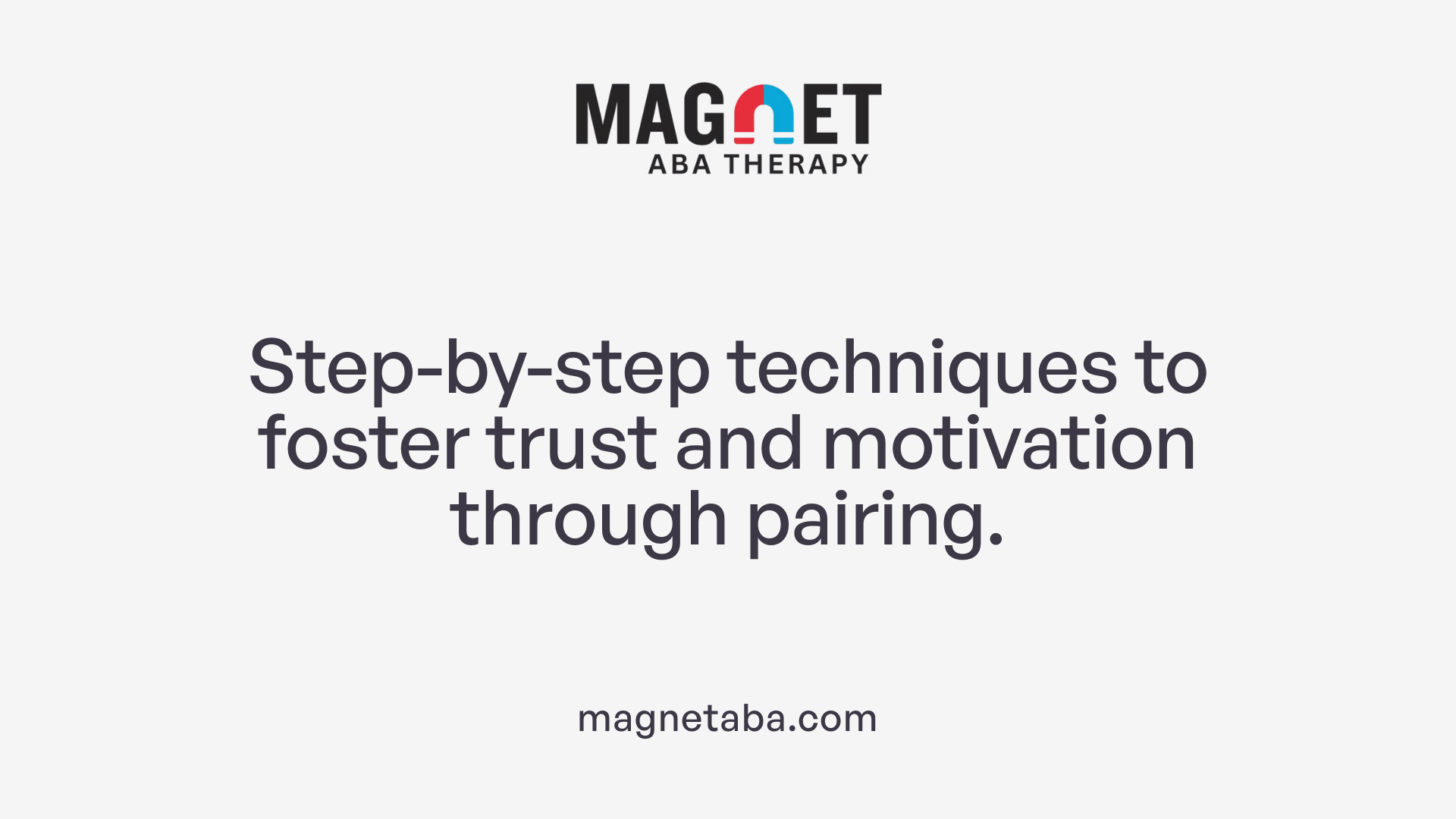
How can pairing be effectively implemented in ABA therapy?
Effective pairing is the cornerstone of successful ABA therapy. It begins with the therapist engaging in activities the child already finds enjoyable, such as playing with preferred toys or snacks. This association makes the therapy environment feel safe and positive. To foster trust, therapists should use enthusiastic praise and follow the child's lead, ensuring interactions are playful and light-hearted.
Initially, demands are avoided, focusing instead on building a strong, trusting relationship. Therapists pay close attention to signs that the child is comfortable and happy—such as seeking out the therapist or engaging eagerly with preferred items. As rapport develops, demands can be gradually introduced in a way that the child perceives as non-threatening.
Monitoring progress is vital. Signs of effective pairing include increased attention towards the therapist, decreased maladaptive behaviors, and consistent compliance with simple requests. This ongoing observation allows therapists to adapt their approach—enriching activities, changing reinforcers, or adjusting the pace—to ensure that the child remains motivated and engaged.
Ultimately, successful pairing creates a motivating environment that not only reduces resistance but also sets a solid foundation for future learning and skill development. This positive relationship makes therapy sessions more enjoyable and productive, leading to better overall outcomes.
Benefits and Outcomes of Effective Pairing

What are the benefits of pairing in therapy and skill development?
Effective pairing plays a vital role in enhancing various aspects of therapy and skill growth, especially in interventions for children with autism. One of the primary advantages is that it significantly boosts motivation and cooperation. When a child associates the therapist with positive experiences, they are more likely to engage willingly and sustain attention during sessions.
Reduced challenging behaviors are another critical benefit. As the child's comfort level increases, resistance and problematic behaviors often decrease, creating a more conducive environment for learning. This trust-building process also fosters a safe space where children feel secure enough to explore new skills.
Building a solid rapport through pairing improves learning outcomes by enabling the therapist to better understand individual preferences, strengths, and interests. This personalized understanding allows for tailored activities that promote faster skill acquisition. Additionally, the positive associations developed during pairing facilitate the generalization of skills across different settings and people, ensuring that learned behaviors are functional beyond therapy.
The foundational role of pairing in therapy cannot be overstated. It establishes a positive, engaging environment where children are eager to participate. Consequently, therapy sessions become more effective, enjoyable, and productive, laying the groundwork for ongoing progress and success.
In summary, effective pairing creates a trusting relationship that enhances motivation, reduces problematic behaviors, improves learning efficiency, and supports the transfer of skills to real-world contexts. These outcomes are essential for meaningful and sustained development.
Fostering Growth Through Trust and Connection
In summary, pairing is not merely a preparatory step but the essential foundation upon which successful therapeutic and educational relationships are built. By understanding and implementing effective pairing techniques, practitioners can establish trust, reduce anxiety, and motivate learners to participate actively. The ongoing process of building rapport through positive associations enhances therapy outcomes, accelerates skill acquisition, and promotes long-lasting behavioral change. As we continue to recognize the scientific support behind the importance of pairing, it becomes clear that nurturing genuine connections is at the heart of meaningful learning and growth, transforming challenging behaviors into opportunities for development.
References
- The ABCs of ABA: What is Pairing & Building Rapport?
- The Importance of Building Rapport in ABA - Behavior Nation
- The Benefits of Pairing in ABA Therapy
- Developing Procedures to Improve Therapist–Child Rapport in Early ...
- ABA Therapy Pairing - The Whats Whys and Hows - Flywheel Centers
- The Effectiveness of Pairing in ABA Therapy - Motivity
- Pairing and Building Rapport - Autism Services Of Kansas
- Pairing: Building Relationships Before Placing Demand
- ABA 101: Pairing With Your Client - Cornerstone Autism Center






